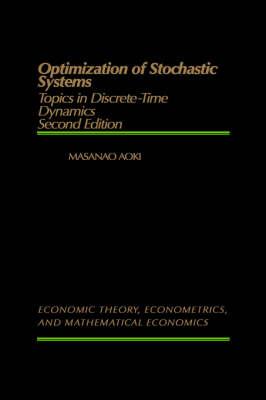Overview
From the Preface The first edition of this book was written mainly for audiences with physical science and engineering backgrounds. Nevertheless, it reached some readers with economic and management science training. Analytical training of graduate students in economics and management sciences had progressed much in the last 20 years, and many new research results and optimization algorithms have also become available. My own interest in the meantime has shifted to the analysis of dynamics and optimization problems of economic and management science origin. With these developments and changes, I decided to rewrite much of the first edition to make it more accessible to graduate students and professionals in social sciences. I have also incorporated some new analytic tools that I deem useful in analyzing the dynamic and stochastic problems which confront these readers. I hope that my efforts successfully bring intertemporal optimization problems closer to economics professionals. New topics introduced into this second edition appear mostly in Chapters 2, 4, 5, 6, and 8. Martingales and martingale differences are introduced early in Chapter 2. Some limit theorems and asymptotic properties of linear state space models driven by martingale differences are presented. Because many excellent books are available on martingales and their limit theorems, derivations and proofs are mostly sketchy, and readers are referred to these sources. The results in Chapteer 2 are applied in Chapters 5, 6, and 8, among other places. The notion of dynamic aggregation and its relation to cointegration and error-correction models are developed in Chapter 4. Some recursive parameter estimation schemes and their statistical properties are included in Chapters 5 and 6. Here again, books devoted entirely to these topics are available in the literature, and much had to be omitted to keep the second edition to a manageable size. In an appendix to Chapter 7, a potentially very powerful tool in proving convergence of adaptive schemes is outlined. Rational expectations models and their solution methods are developed in Chapter 8 because of their wide-spread interest to economists. A very important class of problems in sequential decision problems revolves around questions of approximating nonlinear dynamics or more generally complex situations with a sequence of less complex ones. Chapter 9 does not begin to do justice to this class of problems but is included as being suggestive of works to be done. When I first started contemplating the revision of the first edition, I benefited from a list of excellent suggestions from Rick van der Ploeg, though I did not necessarily incorporate all of his suggestions. Conversations with Thomas Sargent and Victor Solo were useful in organizing the material into the form of the second edition. I also benefited from discussions with Hashem Pesaran and correspondences with L. Broze in finalizing Chapter 8. Some material in this book was used as lecture notes in a graduate course in the Department of Economics, University of California, Los Angeles, the winter quarter of 1987. I thank the participants in the course for many useful comments.
Full Product Details
Author: Masanao Aoki ,
Karl Shell
Publisher: Emerald Publishing Limited
Imprint: Academic Press Inc
Edition: 2nd Revised edition
Dimensions:
Width: 15.20cm
, Height: 2.80cm
, Length: 22.90cm
Weight: 0.804kg
ISBN: 9780120588510
ISBN 10: 012058851
Pages: 432
Publication Date: 22 November 1989
Audience:
Professional and scholarly
,
Professional & Vocational
Format: Hardback
Publisher's Status: Out of Print
Availability: In Print

Limited stock is available. It will be ordered for you and shipped pending supplier's limited stock.
Reviews
"""The coverage of topics is very impressive, and to understand these topics one should have a good knowledge of probability theory and it will be advantageous if one is already familiar with time series and stochastic control theory. To my surprise I found very little knowledge of economics is necessary. I enjoyed reading this book and I think it will definitely be a very useful book in optimization."" --SHORT BOOK REVIEW ""Overall the material is well presented with examples... ample references are provided."" --ZENTRALBLATT FUR MATHEMATIK"
The coverage of topics is very impressive, and to understand these topics one should have a good knowledge of probability theory and it will be advantageous if one is already familiar with time series and stochastic control theory. To my surprise I found very little knowledge of economics is necessary. I enjoyed reading this book and I think it will definitely be a very useful book in optimization. --SHORT BOOK REVIEW Overall the material is well presented with examples... ample references are provided. --ZENTRALBLATT FUR MATHEMATIK



